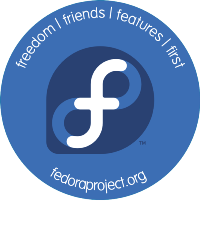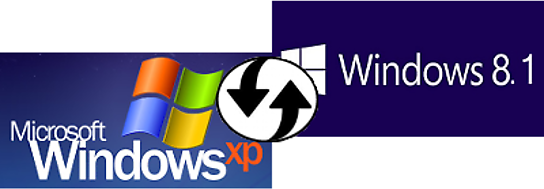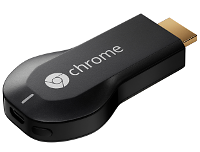Red Hat Fedora Turns Ten!
 Fedora is cool, hard to believe it is 10 years old! Time flies!
Fedora is cool, hard to believe it is 10 years old! Time flies!
Fedora, Red Hat’s community Linux, turns 10
ZDNet – Steven J. Vaughan-Nichols – “Today, Fedora is one of the most beloved Linux distributions. Top Linux kernel programmers, including Linus Torvalds himself, use Fedora for developing the next generation of Linux. For Red Hat, Fedora’s parent company, Fedora is its road-map for its market-leading Red Hat Enterprise Linux (RHEL). It didn’t start that way. When Fedora first launched, it was hated.
Why? Because in 2003 Red Hat had just decided to drop its low-end Linux desktop distribution, Red Hat Linux, in favor of its business distribution, RHEL. The users were not happy. Comments I heard at the time included, ‘Red Hat has betrayed Linux’ and ‘Red Hat wants to be the next Microsoft.’ One mid-major Linux company of the day, Progeny offered paid support for angry Red Hat Linux 9 users.
Red Hat made this move because it found itself on the horns of a dilemma. On the one hand, its most loyal fans wanted Red Hat to continue to be a fast-paced hacker Linux company, always turning out the latest stuff like all the other Linux firms of its day. Red Hat’s paying customers, however, wanted a rock-stable business distribution.
As Greg DeKoenigsberg, today the VP of Community for Eucalyptus Systems, an open-source cloud company, and an early Fedora project leader, said, ‘We had a product in Red Hat Linux that was trying to perform two duties at the same time: It was trying to be enterprise software and it was trying to be cutting edge, ‘release early, release often’ software. Once the business realized that these were two conflicting goals they made the move to splitting the two.’
Fun or money? Which would you choose?
Red Hat made its decision to go for the gold. They were right to do so. In 2012, Red Hat became the first billion dollar Linux company. With the exception of SUSE, the other major Linux companies of the early 21st century, Caldera, MandrakeSoft (later Mandriva), Lindows, etc. have either disappeared or are a shadow of their former selves.
At the same time, Red Hat did not want to lose its strong developer community. So, with the help of its community, noteably Warren Togami who first created Fedora as a community Red Hat software-package repository, and Bill Nottingham, the first Fedora leader, Fedora Core was born. It would become the first successful commercially-sponsored community Linux distribution. This combination of a business distribution and a pure open-source one would become a popular open-source business model. In 2007, Red Hat merged Core with another community Linux project, Extra, to form the Fedora you know in 2013.
Today, ten years after Red Hat decided to have both a business Linux and a community Linux, Fedora is the most popular technical Linux of them all. Its cutting-edge code leads the way for many Linux developers.
Red Hat states on its site that ‘For 10 years, the Fedora Project has beaten the drum for the open-source world, delivering the latest features and technologies approximately every six months, thanks to the dedication of a diverse global community of contributors. Advancing technologies like virtualization, cloud computing, and software-defined everything, Fedora releases from Yarrow to Heisenbug have continuously pushed open source to new heights and addressed the most complex challenges of next-generation computing.’
As Michael Tiemann, Red Hat’s VP of Open Source Affairs, said, ‘We could not make the kind of big bets that we make with major updates of RHEL without … Fedora.’ Looking ahead, current Fedora leader, Robyn Bergeron, said in an interview, ‘For us in Fedora, I think it’s important for us to continue to evolve ways for people to find the OS a fruitful place for them to contribute.”
Happy birthday Fedora! And, here’s to another ten-years of Fedora, long may it innovate!”




 Yes, you read that right, a FREE anti-virus. And it comes very highly rated, and recommended! Let’s face it, Microsoft Security Essentials really isn’t up to today’s evil minions of virus writing! But this is truly commercial quality, and is free too!
Yes, you read that right, a FREE anti-virus. And it comes very highly rated, and recommended! Let’s face it, Microsoft Security Essentials really isn’t up to today’s evil minions of virus writing! But this is truly commercial quality, and is free too! ‘More than one-third of radio listening takes place in the home and we are continually innovating and investing in new platforms that help us seamlessly deliver access to Pandora across a broad range of connected devices,’ Pandora CTO and Executive VP of product Tom Conrad said in a statement. ‘By integrating Google Cast technology into our mobile apps, users now have another easy access point to a better listening experience from the biggest screen in their living room.’
‘More than one-third of radio listening takes place in the home and we are continually innovating and investing in new platforms that help us seamlessly deliver access to Pandora across a broad range of connected devices,’ Pandora CTO and Executive VP of product Tom Conrad said in a statement. ‘By integrating Google Cast technology into our mobile apps, users now have another easy access point to a better listening experience from the biggest screen in their living room.’